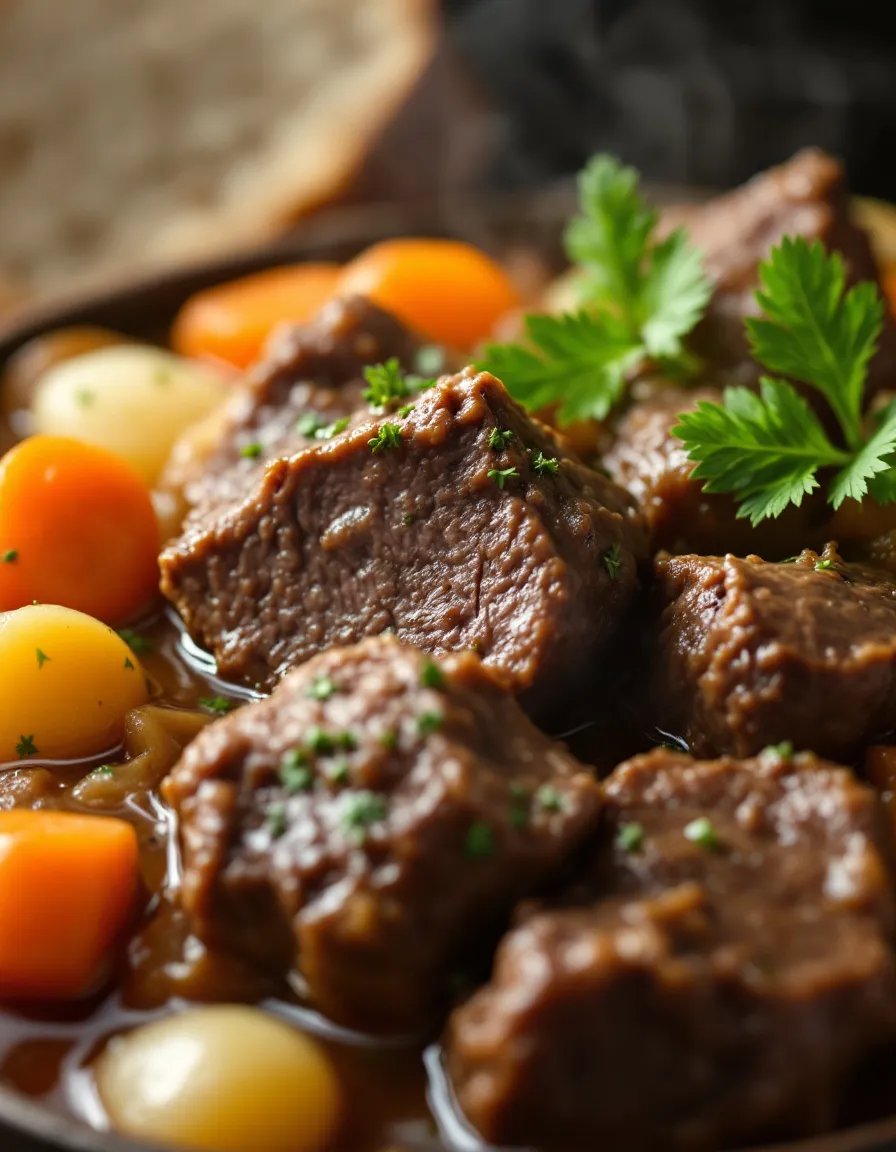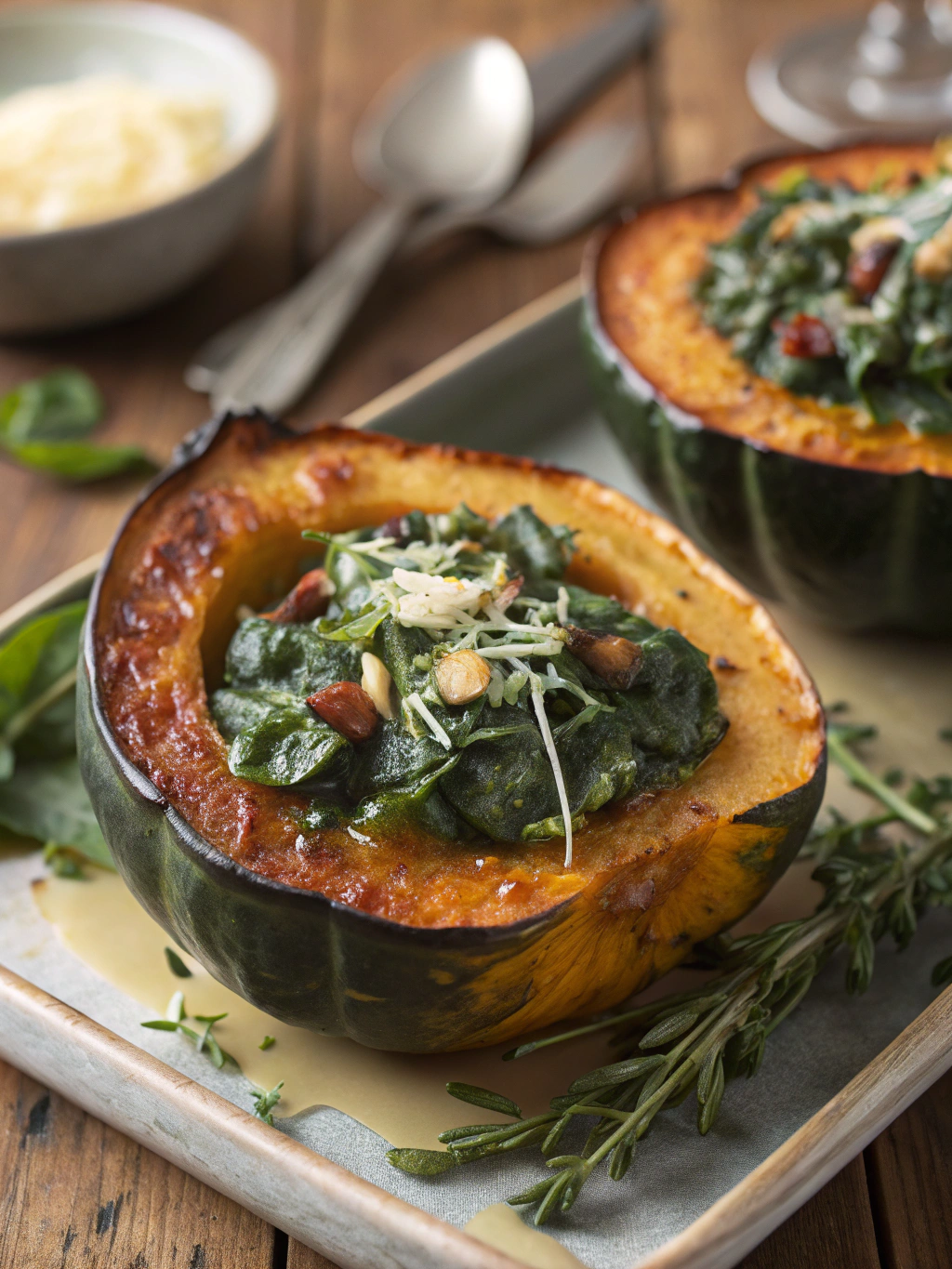Guinness Beef Stew: A Hearty Irish Classic for Cozy Nights
There’s something undeniably comforting about a bowl of Guinness Beef Stew. This rich, hearty dish combines tender chunks of beef, earthy root vegetables, and the deep, malty flavor of Guinness stout, creating a meal that’s perfect for chilly evenings or St. Patrick’s Day celebrations. The slow-cooked beef becomes melt-in-your-mouth tender, while the vegetables soak up the savory broth, making every bite a symphony of flavors. Whether you’re a seasoned cook or a beginner, this recipe is sure to impress your family and friends.
The magic of Guinness Beef Stew lies in its simplicity and depth of flavor. The stout adds a unique richness that balances the savory beef and sweet carrots, while herbs like thyme and bay leaves infuse the stew with aromatic warmth. Serve it with crusty bread or creamy mashed potatoes for a meal that’s both satisfying and unforgettable. Let’s dive into the details of this classic Irish dish and learn how to make it at home.
Quick Recipe Highlights
- Flavor Profile: Rich, savory, and slightly sweet with a hint of bitterness from the Guinness stout.
- Texture: Tender beef, soft vegetables, and a thick, velvety broth.
- Aroma: Earthy and aromatic, with notes of thyme, bay leaves, and malt.
- Visual Appeal: Deep brown broth with vibrant orange carrots and green parsley garnish.
- Skill Level Needed: Perfect for intermediate cooks or ambitious beginners.
- Special Equipment: A heavy-bottomed pot or Dutch oven is essential for even cooking.
Recipe Overview
- Difficulty Level: This recipe requires some patience and attention to detail, but the steps are straightforward. Perfect for those looking to expand their cooking skills.
- Category: Main dish, comfort food, stew.
- Cuisine: Irish, with influences from traditional European cooking.
- Cost: Affordable, especially when using budget-friendly cuts of beef like chuck roast.
- Season: Ideal for fall and winter, but can be enjoyed year-round.
- Occasion: Great for family dinners, holiday gatherings, or casual weeknight meals.
Why You’ll Love This Recipe
This Guinness Beef Stew is a crowd-pleaser for so many reasons. First, the taste is unbeatable—each spoonful delivers a perfect balance of savory beef, sweet vegetables, and the unique depth of Guinness stout. The texture is equally satisfying, with tender meat and soft, flavorful vegetables that melt in your mouth. It’s the ultimate comfort food that warms you from the inside out.
From a convenience standpoint, this recipe is a winner. While it does require some time to cook, most of it is hands-off, allowing you to focus on other tasks or simply relax. Plus, it’s a one-pot meal, meaning fewer dishes to clean up afterward. The stew also reheats beautifully, making it a great option for meal prep or leftovers.
Nutritionally, this dish is packed with protein from the beef and vitamins from the vegetables. It’s a balanced meal that keeps you full and satisfied. The Guinness adds a unique flavor without overwhelming the dish, and its antioxidants provide a small health boost.
Socially, this stew is a star. It’s perfect for entertaining, as it can be made ahead of time and served family-style. Pair it with a pint of Guinness or a glass of red wine, and you’ve got a meal that’s sure to impress your guests. It’s also a great conversation starter, especially if you share the history and cultural significance of the dish.
Finally, this recipe is cost-effective and accessible. Most of the ingredients are pantry staples or easy to find at your local grocery store. Even the Guinness can be swapped for another stout or dark beer if needed. It’s a budget-friendly way to create a restaurant-quality meal at home.
Historical Background and Cultural Significance
Guinness Beef Stew has its roots in Irish culinary tradition, where hearty, filling meals were essential for sustaining families through long, cold winters. The use of Guinness stout in cooking dates back to the 18th century, when the iconic Irish beer became widely available. The stout’s rich, malty flavor made it a natural addition to stews and braises, adding depth and complexity to simple ingredients.
In Ireland, stews like this were often made with whatever ingredients were on hand, making them a versatile and practical dish. Over time, Guinness Beef Stew became a beloved classic, enjoyed in homes and pubs alike. It’s now a staple of Irish cuisine and a symbol of the country’s rich culinary heritage.
The recipe has evolved over the years, with variations incorporating different vegetables, herbs, and spices. Some versions include barley or potatoes, while others focus on the simplicity of beef, carrots, and onions. Despite these variations, the core elements of tender beef and Guinness stout remain constant, ensuring that the dish stays true to its roots.
Today, Guinness Beef Stew is enjoyed worldwide, especially during St. Patrick’s Day celebrations. It’s a dish that brings people together, offering a taste of Ireland’s history and culture in every bite.
Ingredient Deep Dive
Beef Chuck Roast
Beef chuck roast is the star of this stew, known for its rich flavor and ability to become tender when slow-cooked. This cut comes from the shoulder of the cow and contains a good amount of connective tissue, which breaks down during cooking to create a melt-in-your-mouth texture. Look for well-marbled pieces for the best results. Store it in the refrigerator for up to 2 days or freeze it for longer storage.
Guinness Stout
Guinness stout adds a unique depth of flavor to the stew, with its malty sweetness and slight bitterness. It also helps tenderize the beef and thicken the broth. If you can’t find Guinness, any dark stout or porter will work as a substitute. Store leftover beer in the fridge for up to a week.
Carrots and Potatoes
Carrots and potatoes are classic stew vegetables, adding sweetness and heartiness to the dish. Choose firm, fresh carrots and waxy potatoes like Yukon Gold for the best texture. Store them in a cool, dark place to keep them fresh.
Common Mistakes to Avoid
- Using lean cuts of beef: Lean cuts can become tough and dry when cooked for long periods. Stick to marbled cuts like chuck roast.
- Skipping the searing step: Searing the beef locks in flavor and creates a rich, caramelized crust.
- Overcooking the vegetables: Add them later in the cooking process to prevent them from becoming mushy.
- Not deglazing the pot: Scrape up the browned bits after searing to incorporate all the flavorful goodness into the stew.
- Using too much salt early on: The broth will reduce as it cooks, so season gradually to avoid over-salting.
Essential Techniques
Searing the Beef
Searing the beef is crucial for developing deep, rich flavors. Heat your pot until it’s very hot, then add the beef in batches to avoid overcrowding. Let it brown without moving it too much to create a caramelized crust.
Deglazing the Pot
After searing, deglaze the pot with Guinness or broth to lift the flavorful browned bits from the bottom. This step ensures that all the delicious flavors are incorporated into the stew.
Slow Cooking
Low and slow cooking is key to tenderizing the beef and allowing the flavors to meld. Keep the heat low and let the stew simmer gently for the best results.
Pro Tips for Perfect Guinness Beef Stew
- Use a heavy-bottomed pot or Dutch oven for even heat distribution.
- Cut the beef into uniform pieces for consistent cooking.
- Add the vegetables in stages to prevent overcooking.
- Taste and adjust seasoning before serving.
- Let the stew rest for 10-15 minutes before serving to allow the flavors to settle.
Variations and Adaptations
Regional Variations
In some parts of Ireland, barley or pearl onions are added to the stew for extra texture and flavor. You can also experiment with different root vegetables like parsnips or turnips.
Dietary Modifications
For a gluten-free version, ensure the Guinness is gluten-free or substitute it with a gluten-free stout. To make it dairy-free, skip any butter and use olive oil instead.
Serving and Presentation Guide
Serve the stew in deep bowls with a sprinkle of fresh parsley for color. Accompany it with crusty bread or mashed potatoes to soak up the flavorful broth. For a modern twist, serve it in individual bread bowls.
Wine and Beverage Pairing
A robust red wine like Cabernet Sauvignon or Malbec pairs beautifully with the rich flavors of the stew. For a non-alcoholic option, try a dark, malty beer or a cup of strong black tea.
Storage and Shelf Life
Store leftover stew in an airtight container in the refrigerator for up to 4 days. Reheat gently on the stovetop or in the microwave. The stew also freezes well for up to 3 months.
Make Ahead Strategies
You can prepare the stew up to 2 days in advance and reheat it before serving. The flavors will deepen over time, making it even more delicious.
Scaling Instructions
To double the recipe, use a larger pot and increase the cooking time slightly. For smaller portions, halve the ingredients but keep the cooking time the same.
Nutritional Deep Dive
This stew is high in protein and provides a good amount of vitamins A and C from the vegetables. It’s a balanced meal that’s both filling and nutritious.
Dietary Adaptations
Gluten-Free
Use a gluten-free stout and ensure all other ingredients are gluten-free.
Low-Carb
Skip the potatoes and add extra low-carb vegetables like cauliflower or zucchini.
Troubleshooting Guide
If the stew is too thin, simmer it uncovered to reduce the liquid. If it’s too thick, add a bit more broth or water. For bland flavor, adjust the seasoning with salt, pepper, or a splash of Worcestershire sauce.
Recipe Success Stories
Many home cooks have shared their success with this recipe, praising its rich flavor and ease of preparation. Some have added their own twists, like using lamb instead of beef or adding a splash of balsamic vinegar for extra depth.
Frequently Asked Questions
Can I use a different beer?
Yes, any dark stout or porter will work as a substitute for Guinness.
Can I make this in a slow cooker?
Absolutely! Follow the same steps, then transfer everything to a slow cooker and cook on low for 6-8 hours.
Additional Resources
For more hearty stew recipes, check out our collection of comfort food classics. You’ll find everything from chicken stew to vegetarian options.
Join the Conversation
Share your Guinness Beef Stew creations on social media using #GuinnessStew. We’d love to see your photos and hear your tips!
The Recipe
Guinness Beef Stew
Serves: 6
Prep Time: 30 mins
Cook Time: 2 hours 30 mins
Total Time: 3 hours
Kitchen Equipment Needed
- Dutch oven or heavy-bottomed pot
- Wooden spoon
- Chef’s knife
- Cutting board
Ingredients
- 2 lbs beef chuck roast, cut into 1-inch cubes
- 2 tbsp olive oil
- 1 large onion, chopped
- 4 garlic cloves, minced
- 4 carrots, peeled and sliced
- 3 celery stalks, sliced
- 4 cups beef broth
- 1 cup Guinness stout
- 2 tbsp tomato paste
- 2 bay leaves
- 1 tsp thyme
- Salt and pepper to taste
Directions
- Heat olive oil in a Dutch oven over medium-high heat. Season beef with salt and pepper, then sear in batches until browned. Remove and set aside.
- Add onion, garlic, carrots, and celery to the pot. Cook until softened, about 5 minutes.
- Stir in tomato paste and cook for 1 minute. Deglaze the pot with Guinness, scraping up any browned bits.
- Return the beef to the pot. Add beef broth, bay leaves, and thyme. Bring to a boil, then reduce heat and simmer for 2 hours, stirring occasionally.
- Season with salt and pepper to taste. Serve hot with crusty bread or mashed potatoes.
Recipe Notes
- For a thicker stew, mix 1 tbsp cornstarch with 2 tbsp water and stir into the stew during the last 10 minutes of cooking.
- Leftovers can be stored in the fridge for up to 4 days or frozen for up to 3 months.






